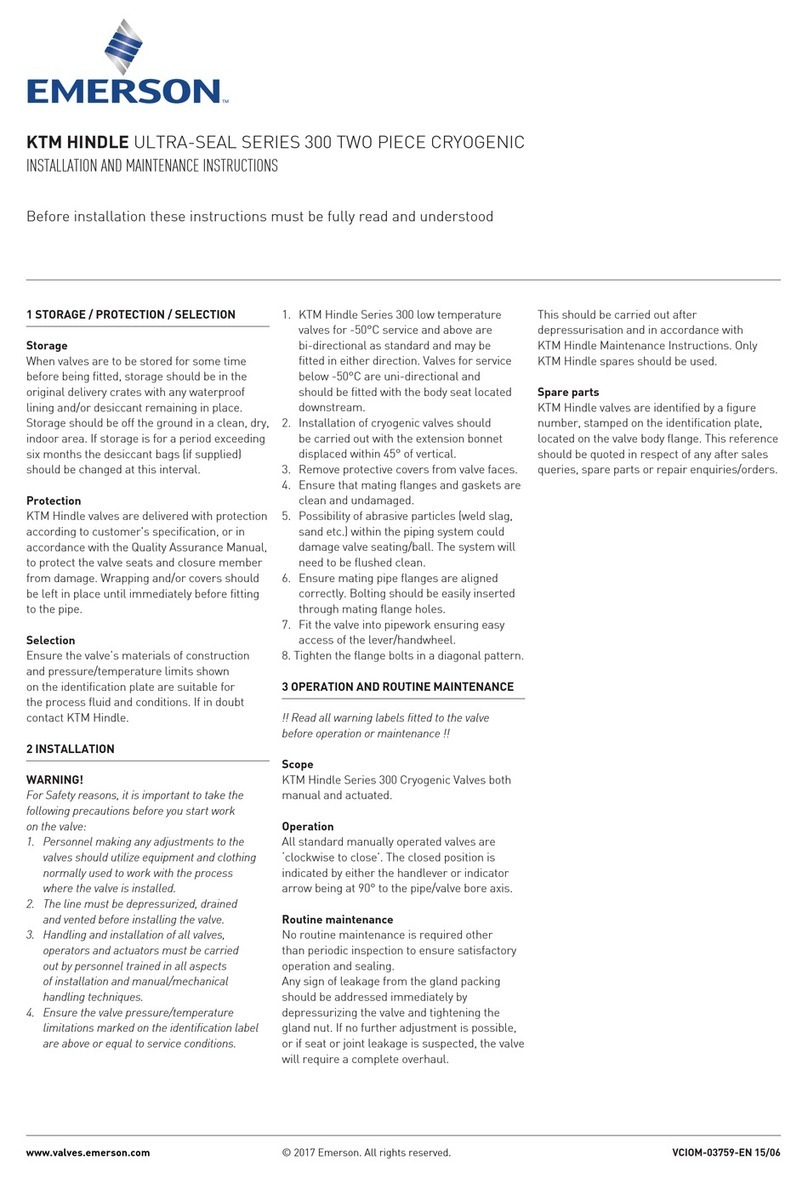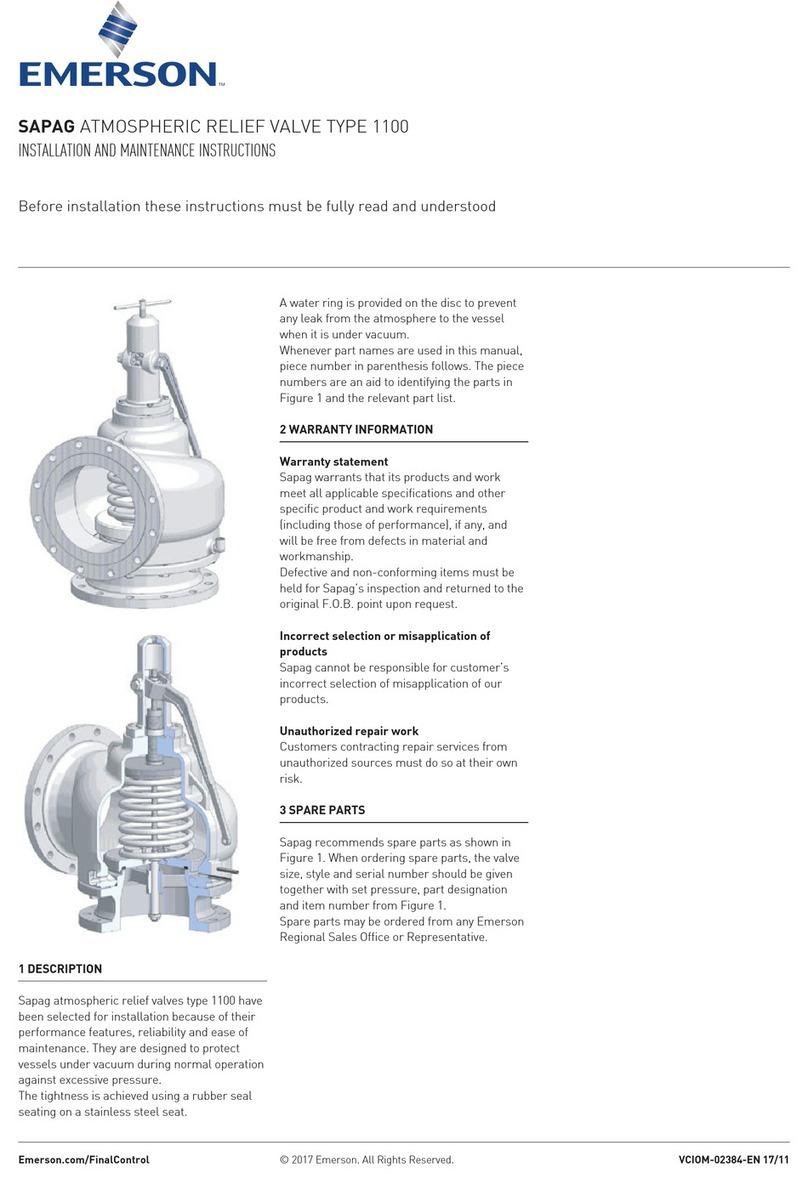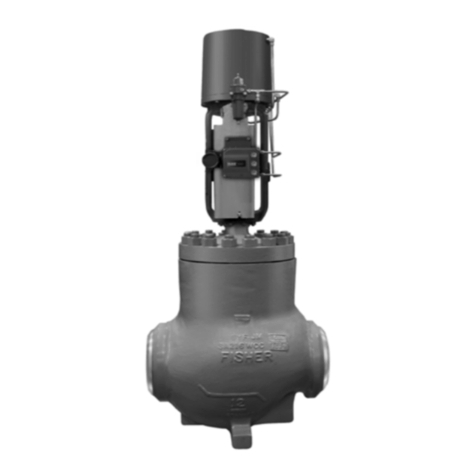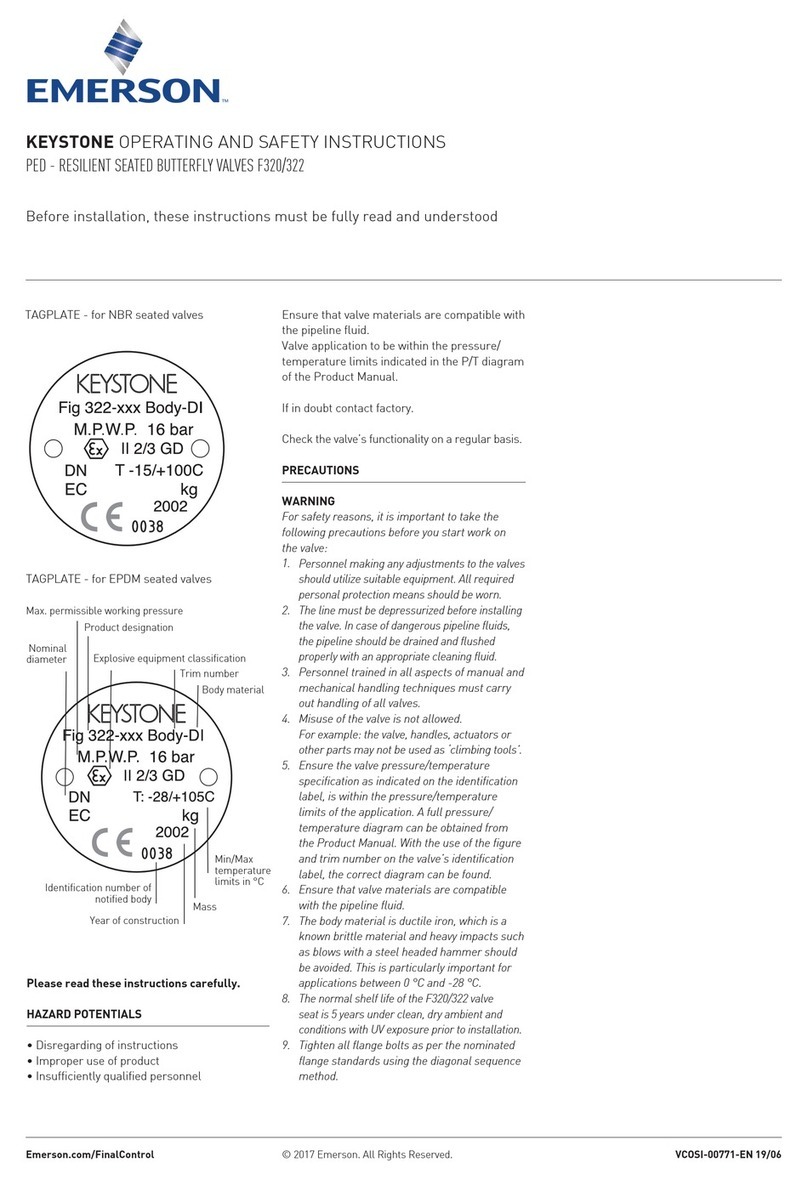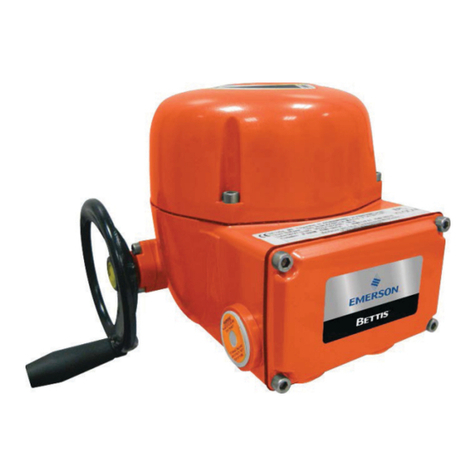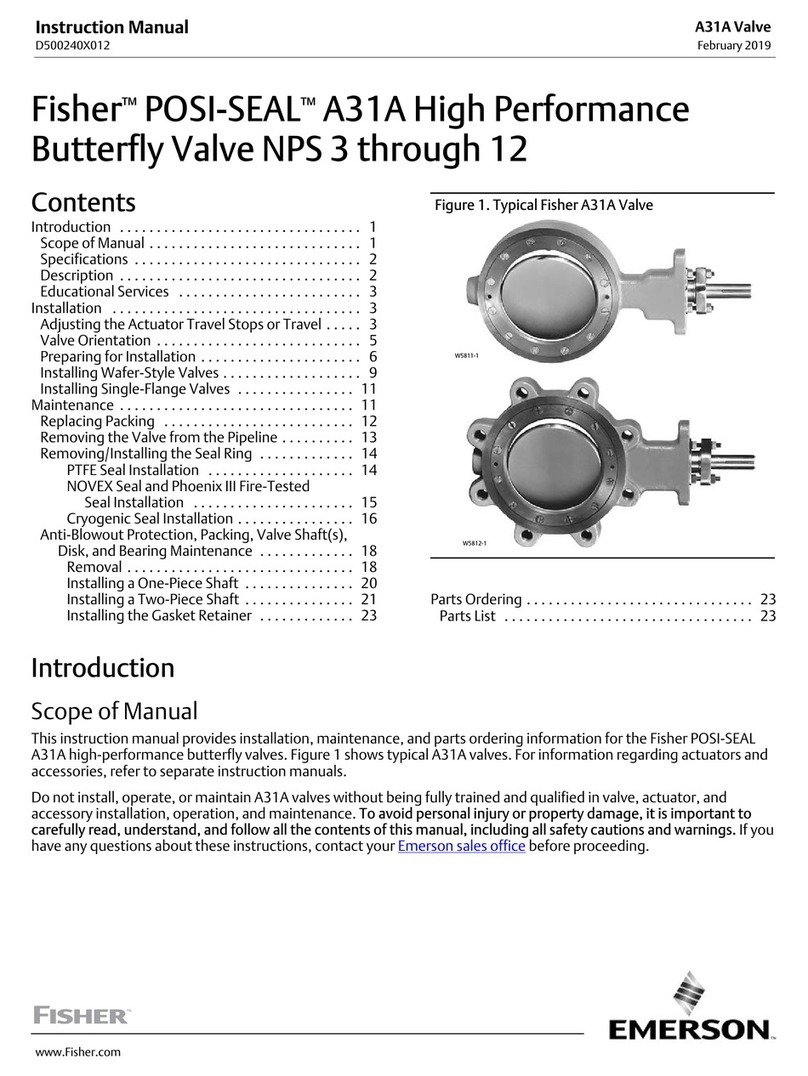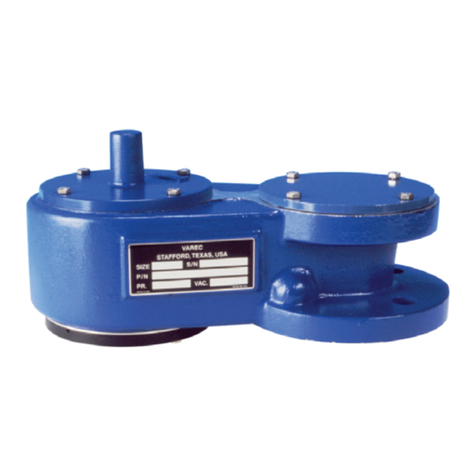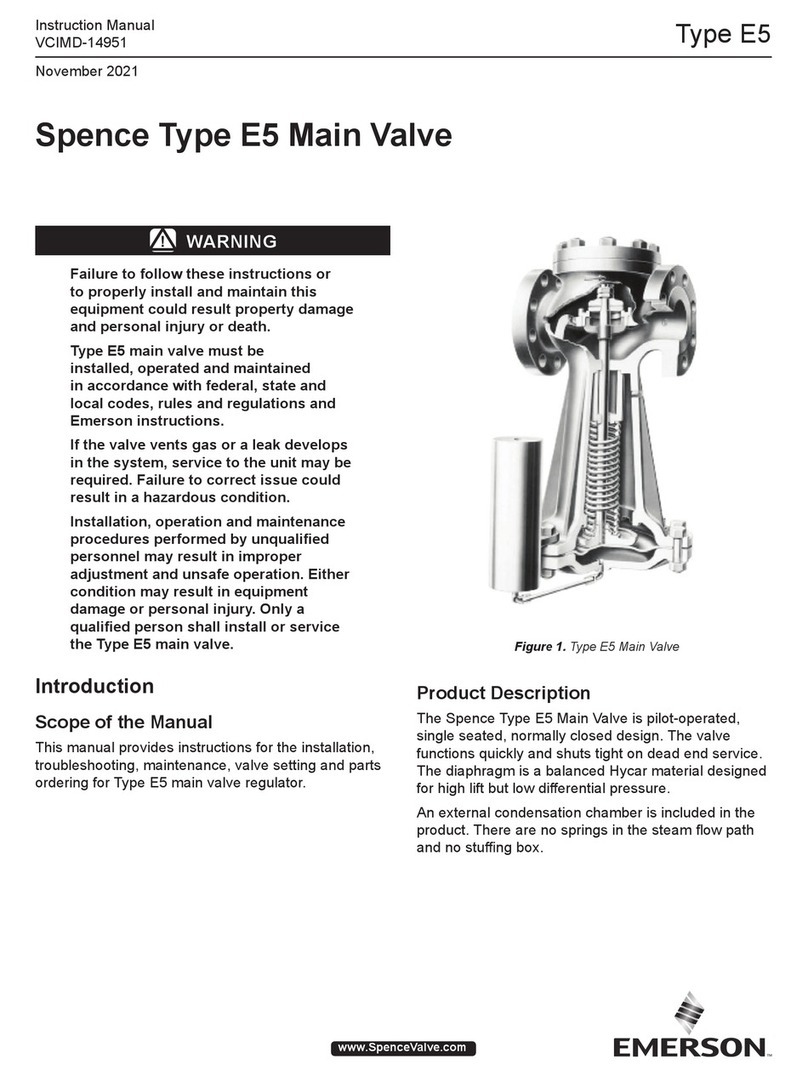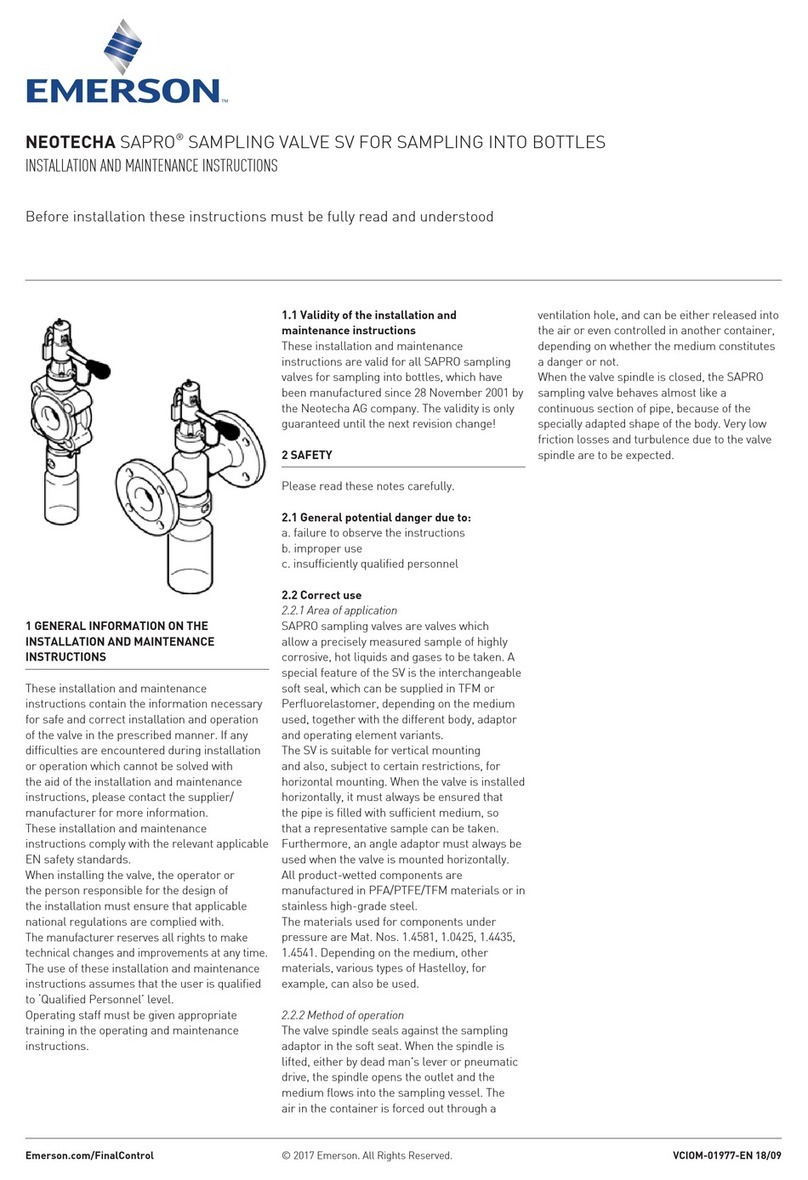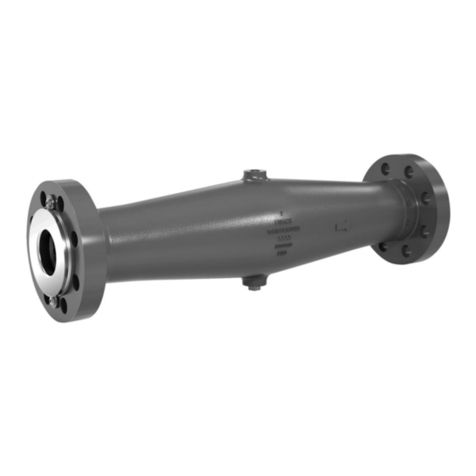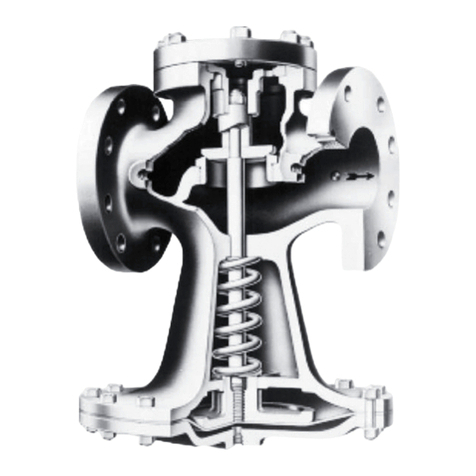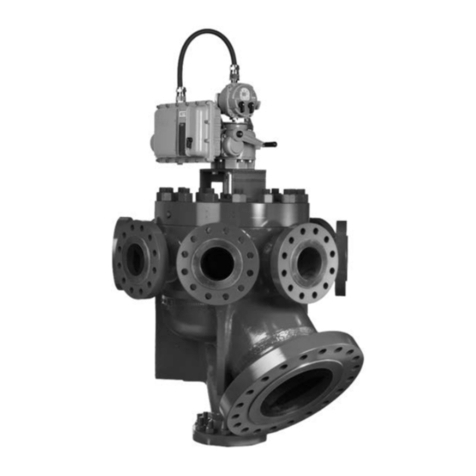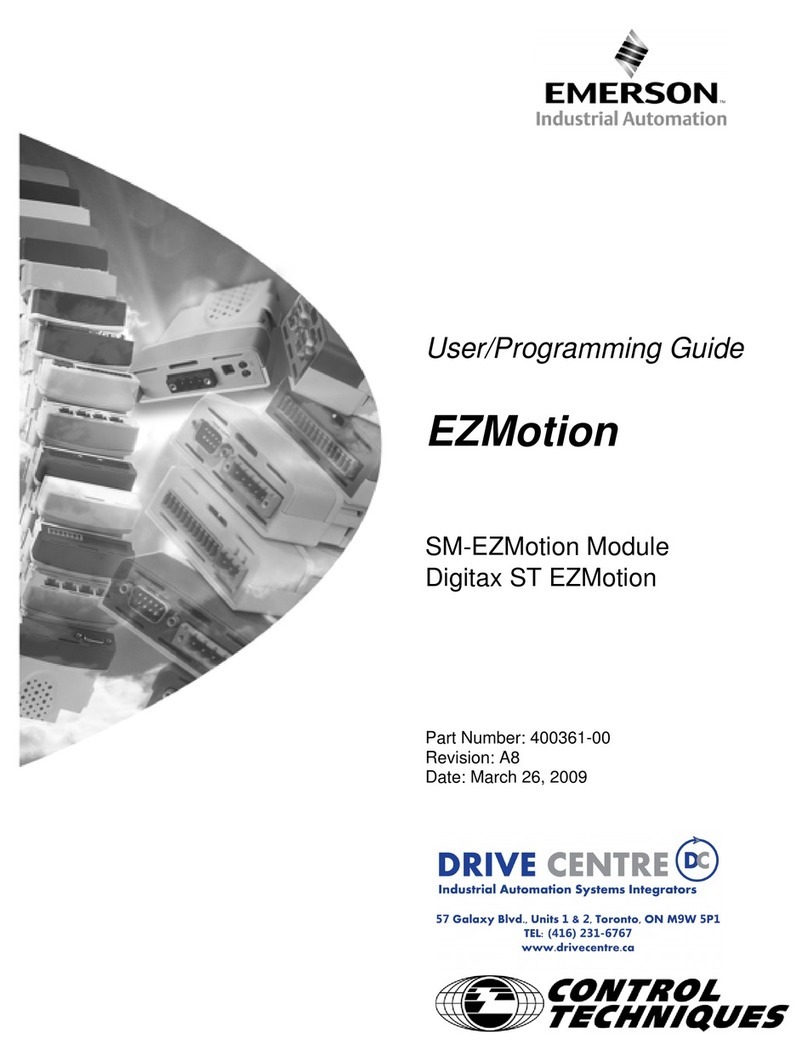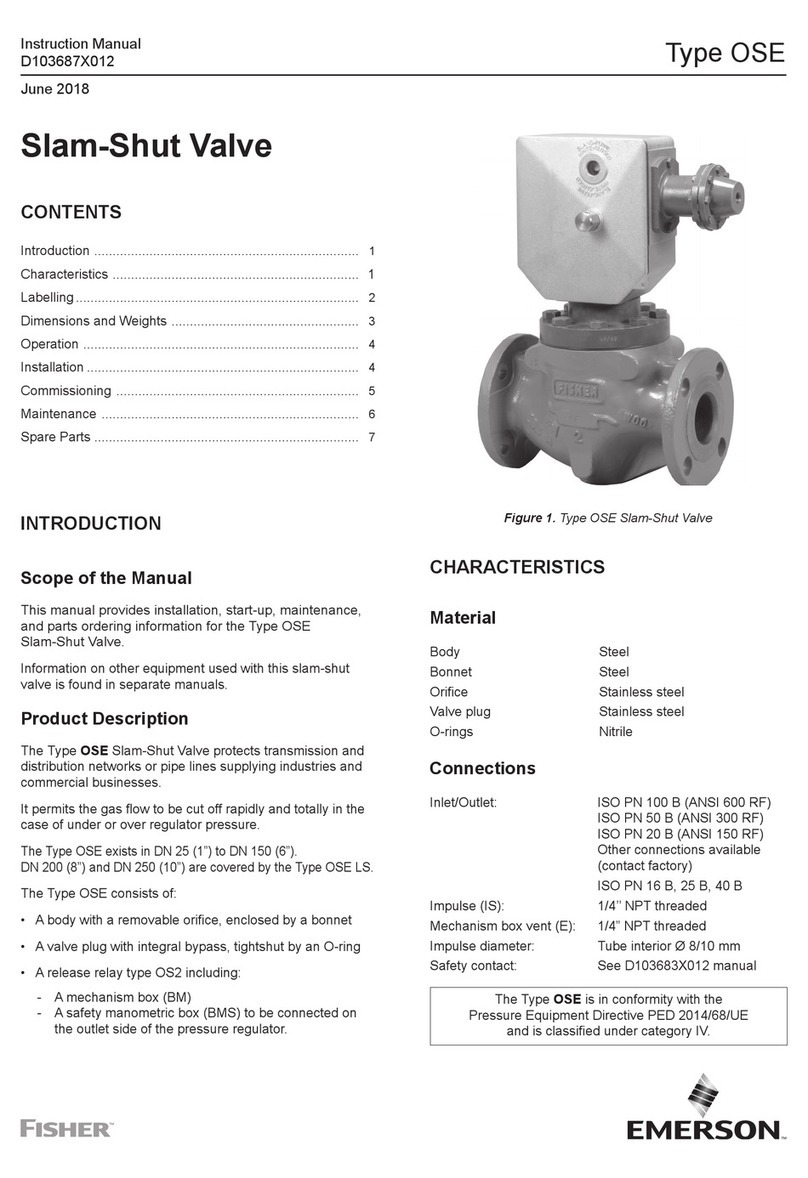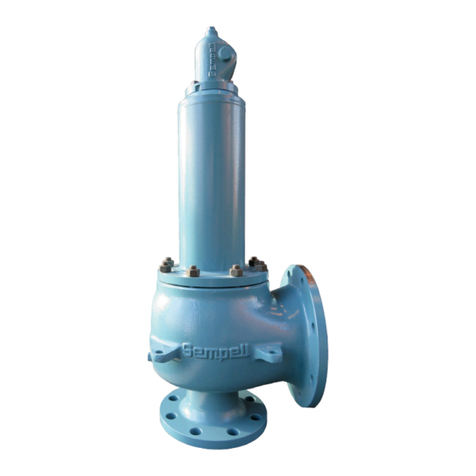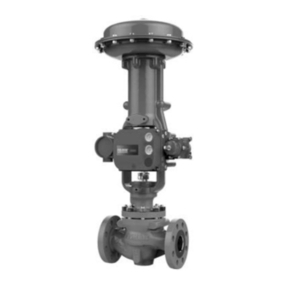
RSS Valve
Instruction Manual
Form 5592
March 2005
5
DDisconnect any operating lines
providing air pressure, electric power,
or a control signal to the actuator. Be
sure the actuator cannot suddenly
open or close the valve.
DUse bypass valves or completely
shut off the process to isolate the
valve from process pressure. Relieve
process pressure from both sides of
the valve. Drain the process media
from both sides of the valve.
DVent the power actuator loading
pressure and relieve any actuator
spring precompression.
DUse lock-out procedures to be
sure that the above measures stay in
effect while you work on the
equipment.
DThe valve packing box may
contain process fluids that are
pressurized, even when the valve has
been removed from the pipeline.
Process fluids may spray out under
pressure when removing the packing
hardware or packing rings, or when
loosening the packing box pipe plug.
DCheck with your process or safety
engineer for any other hazards that
may be present from exposure to
process media.
Note
Whenever a line flange gasket (figure
2) seal is disturbed by removing the
valve from the line, install a new
gasket on reassembly. This is
necessary to ensure a good gasket
seal.
Packing Maintenance
Key numbers are shown in figure 10.
The packing consists of braided packing rings (key
13). The packing box is only a safety measure in
case of a leak through the bellows (key 6).
Therefore, the packing follower (key 11) is tightened
to 1.13 NSm (10 lbfSin) of torque and then loosened
one half turn. To detect a leak through the bellows
(key 6), the bonnet (key 2) can be provided with a
connection for leak-off piping.
Replacing Packing and Bushing Inserts
Key numbers are shown in figure 10.
1. Isolate the control valve from the line pressure.
Release pressure from both sides of the valve and
drain the process media from both sides of the
valve.
2. Exhaust all actuator pressure, and disconnect the
operating lines from the actuator and any leak-off
piping from the bonnet (key 2). Disconnect the
actuator stem connector, and then remove the
actuator from the valve by unscrewing the yoke
locknut (key 14).
3. Remove any travel indicator parts, the locknut
(key 10), and the travel stop (key 16) from the valve
stem (key 5) threads.
CAUTION
Follow the procedures as described in
the next steps to prevent damage to
the bonnet sealing surface and to
prevent packing box leakage.
4. Remove the packing follower (key 11). Unscrew
the cap screws (key 7) and hex nuts (key 8) that
secure the bonnet (key 2) to the valve (key 1). Then,
carefully lift the bonnet off and set it on a protective
surface to prevent damage to the bonnet sealing
surface. If the valve stem, bellows, and valve plug
(keys 5, 6, and 3) come out with the bonnet, remove
these parts from the bonnet. For 0.5 and 0.75 inch
sizes, remove the O-ring (key 30) from the bonnet.
5. Remove bushing inserts, packing rings, and
packing box ring (keys 13, 12, 28, 29).
6. Clean the packing box, packing box ring, and
packing follower.
7. Inspect the valve stem and packing box surfaces
for any sharp edges that might cut the packing.
Scratches or burrs could damage new packing or
cause packing box leakage. If the surface condition
cannot be improved by light sanding, replace the
damaged parts.
8. Install bushing inserts (keys 28 and 29). For 0.5
and 0.75 inch sizes, install the O-ring (key 30) in the
bonnet.
9. Install the bonnet (key 2) over the valve stem
(key 5). Slide the bonnet down until it properly
engages the bonnet locating diameter (figure 5) of
the valve.
Note
In order to ensure accurate positioning
of the valve plug (key 3) and seat ring
